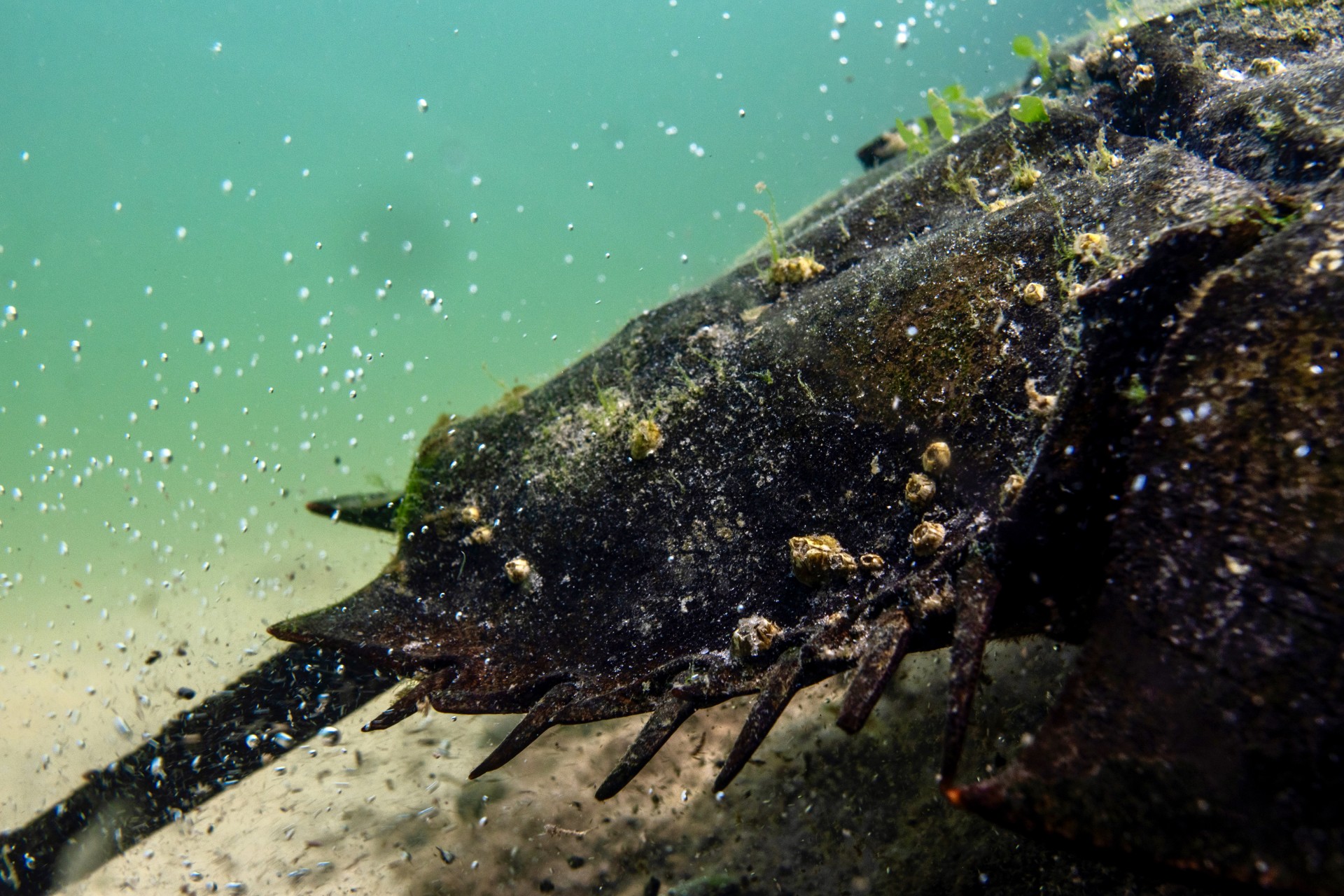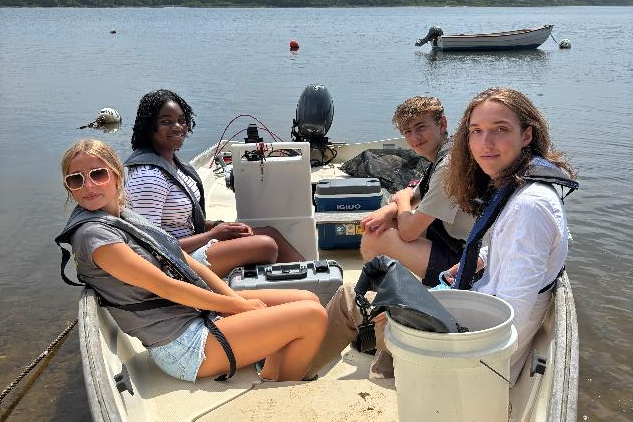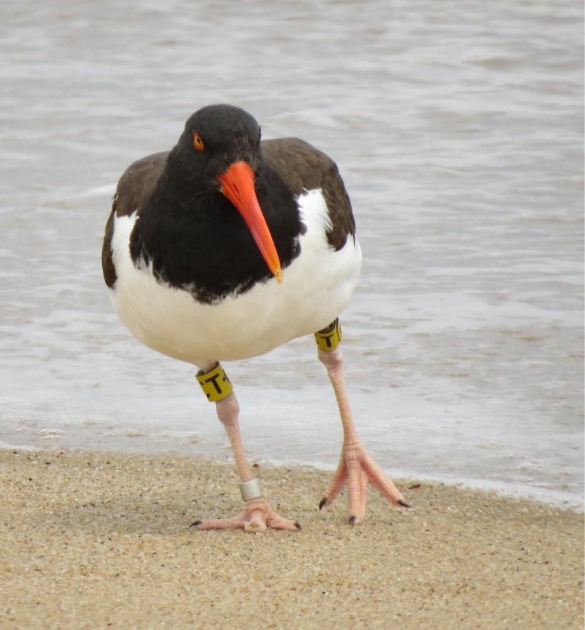Gulls are masters of the sea, land, and air; and also hold the title of bird most likely to steal your bag of chips at the beach.
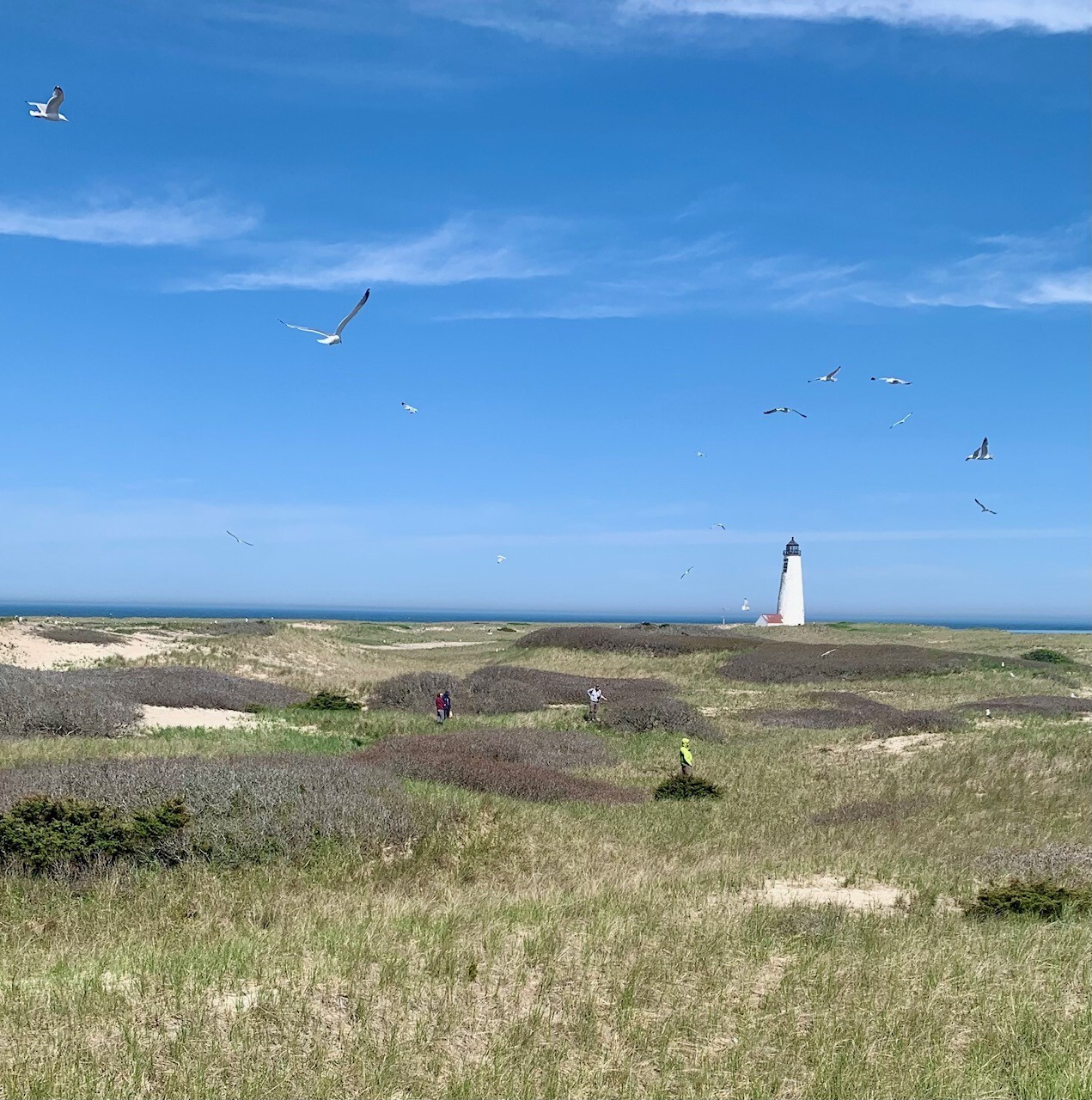
Views of Great Point Lighthouse from atop a dune ridge as surveyors search for nests. Photo by Shea Fee
While the snack pilfering habits of these crafty coastal species can be a nuisance, their generalist lifestyle and command of the coastal environment has allowed them to adapt well to a world increasingly impacted by human habits and lifestyles.
Gulls in Decline
Despite their ability to cohabitate with humans, breeding gull colonies continent-wide have been in decline. In an effort to assess the status of nesting gull populations on Trustees properties, a survey of the Coskata-Coatue Wildlife Refuge colony was conducted. This long-established colony on the northernmost tip of Nantucket supports breeding Herring and Great black-backed gulls. While most are familiar with these species often seeing them on the beach, perched on wharf pilings, or milling about your local restaurant dumpster, Trustees staff got to experience a less familiar side of these birds. By entering the colony, we were able to witness the fierce yet nurturing aspect of these birds in their natural habitat.
Approximately, every 5 years, participants around Massachusetts take stock of all colonial nesting waterbirds including several species of egret, heron, cormorant, and gull. Formal statewide surveys began in earnest in 1994 and this year marked the fifth survey period.
Over the past 30 years, changes in Massachusetts’ gull populations have revealed a troubling trend. From 1994 to 2018, nesting Herring gulls have declined by 60% and Great black-backed gull populations have fallen by an astounding 75%. The results for this year’s survey have not yet been compiled, so only time will tell if these two species will continue their downward trajectory.
Herring and Great black-backed gulls are now listed as a Species of Greatest Conservation Need in Massachusetts’ State Wildlife Action Plan because of their limited breeding distribution. Additionally, Herring gulls are one of the fastest declining breeding birds in the state. The trends observed in Massachusetts reflect a larger picture of continent-wide decline. According to the North American Breeding Bird Survey, Herring gull populations have decreased 76% in North America since 1966 and similar declines have been documented in Great black-backed gulls.

Herring gull sitting on its nest with chick. Photo by Shea Fee
It’s hard to believe that one of the most iconic fixtures of the coast could be in danger of disappearing. Researchers have been puzzling over possible explanations for this decline. One suggested contributor is alterations to natural and human-sourced food supplies. For example, changes in commercial fishing methods and chronic overfishing could be negatively influencing prey and scavenging resources. In addition, pesticides and heavy metal contamination have been attributed to egg and chick loss in Herring gulls. Lastly, like all coastal species, gulls face threats from increased disturbance levels and a rapidly changing climate. Expanding coastal development and rising seas are reducing the land available for nesting and disruptive human-wildlife interactions are increasing.
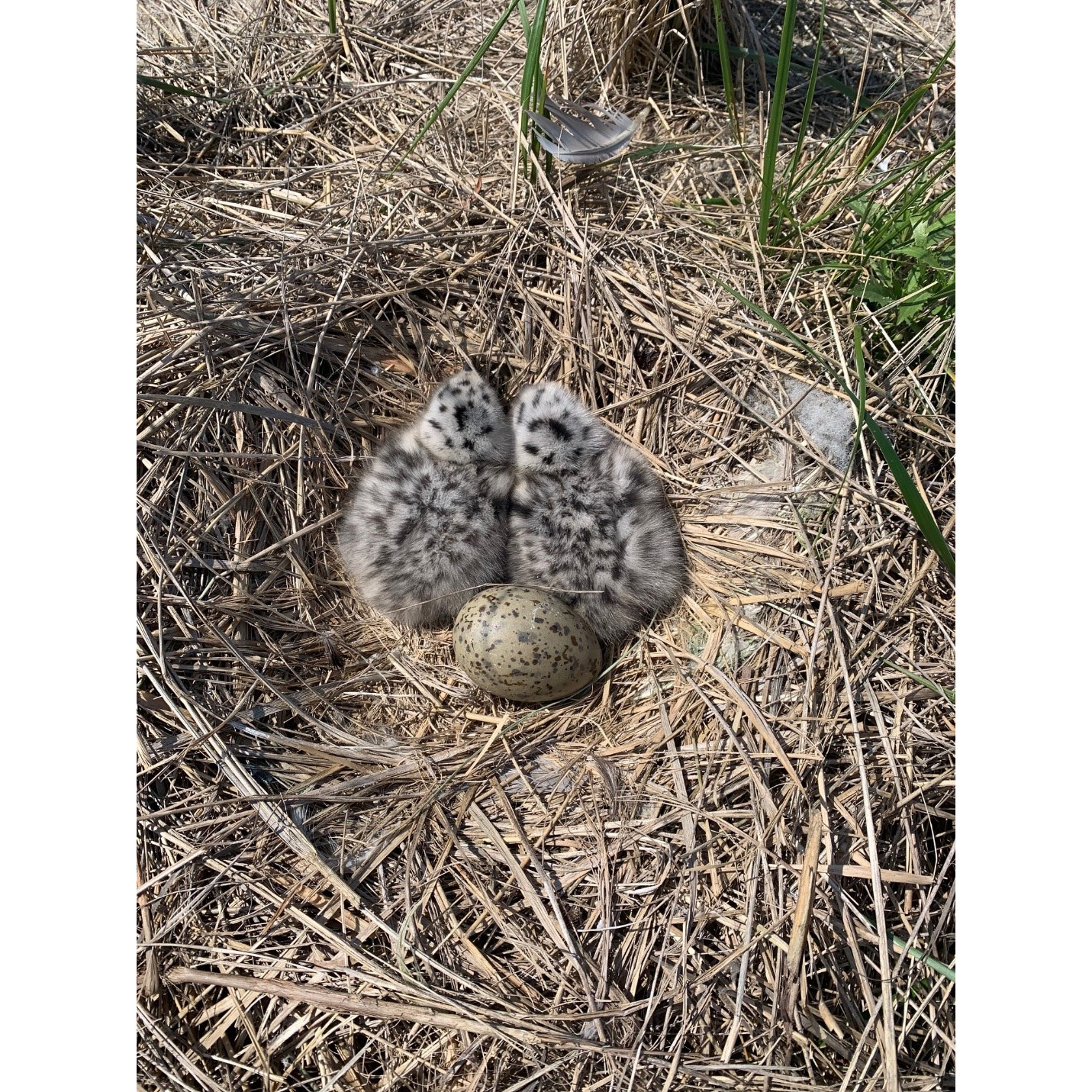
Two young gull chicks huddle together waiting for their third sibling to emerge from its egg. Gulls are typically ground nesting birds, constructing nets out of dead grasses and twigs. Photo by Shea Fee
A Glimpse of Hope for Gulls
However, there is hope for these two species. On May 22nd and 23rd myself and six other intrepid participants entered the Great Point gull colony on Nantucket. Thankfully, all seven of us safely returned. Being in the middle of a large gull colony is an intimidating but one-of-a-kind experience. The constat hollering of adults defending their nests and chicks, and the sheer number of birds circling overhead is astounding.
With the help of the Nantucket Conservation Foundation and local Trustees staff, we assessed the entire breeding area. With hoods up and head protection on, we lined up and traversed the colony (all the while dodging dive bombing gulls and well targeted flying fecal matter).
The number of active nests and chicks for each species were recorded and transects were marked with flags to avoid double counting. Through the colony chaos, each time I happened upon a small beak peeking out of a hatching egg or fluffy chicks huddled together in the nest, I was reminded of the abundance of life this property holds and the refuge it provides. However, any musings about the beauty of life and nature were quickly interrupted by an adult gull swooping dangerously close to my head.
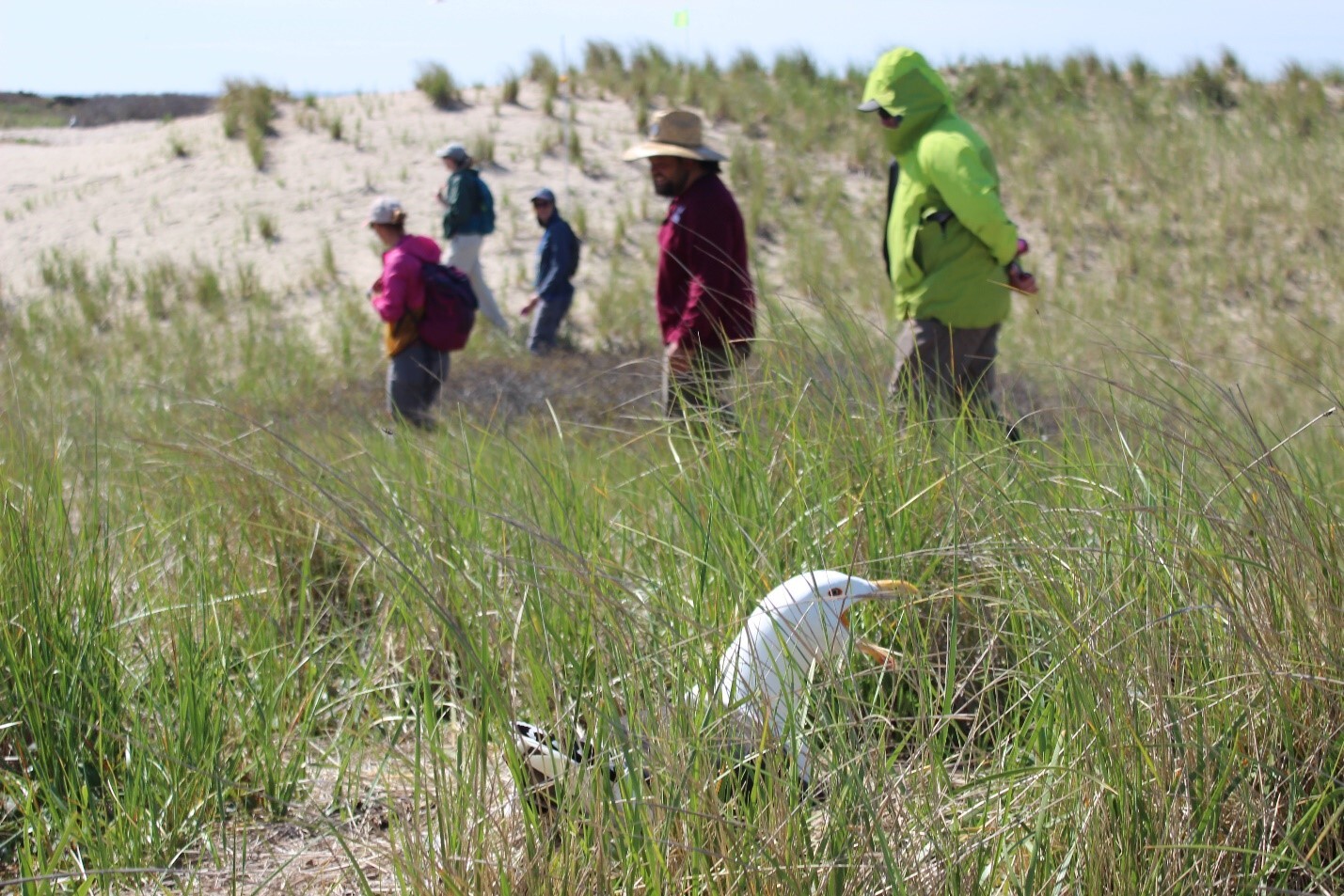
Surveyors line up as an incubating Great black-backed gull defends its nest. Photo by Neil Foley, NCF
In total we walked 13 miles over the course of 2 days to cover the extent of the colony. An impressive 1,053 nests and broods were counted (737 Herring gull and 316 Great Black-backed gull). The Great Point colony has increased by an impressive 488 pairs (86%) since the previous survey in 2018. Herring gulls have increased by 79% and Great black-backed by 107%. With this survey, the Great Point colony has solidified itself as one of the largest colonies in the state and is one of the few that is growing. Supporting an expanding colony of this magnitude truly speaks to the health of this property’s ecosystem and its ability to provide an abundance of minimally disturbed natural habitat.
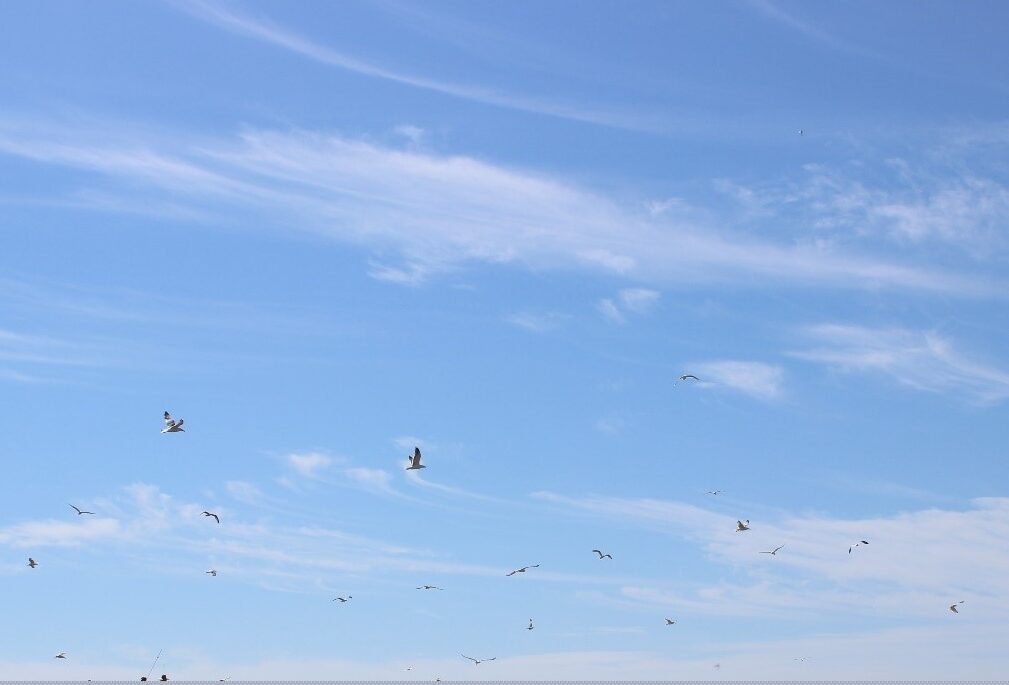
Group of gulls circling surveyors in the colony. Photo by Neil Foley, NCF
Special thanks to our surveyors:
Rowan Moore and Burton Balkind (The Trustees)
Danielle O’Dell, Gracie Bell, Colin Jackson, Jordan Gass, Meredith Broadus, and Neil Foley (Nantucket Conservation Foundation)
References
Breton, A.R., G.A. Fox, and J.W. Chardine. 2008. Survival of adult Herring Gulls (Larus argentatus) from a Lake Ontario colony over two decades of environmental change. Waterbirds 31(1):15-23.
Kurlansky, M. 1997. Cod: a biography of the fish that changed the world. Penguin Putnam Inc., New York, NY.
Massachusetts State Wildlife Action Plan. 2015. Species of Greatest Conservation Need. Chapter 3: 26. Massachusetts Division of Fisheries and Wildlife, USA.
Melvin, S. 2008. Survey of Coastal Nesting Colonies of Cormorants, Gulls, Night-Herons, Egrets, and Ibises in Massachusetts, 2006-08 Final Report. Massachusetts Division of Fisheries and Wildlife, USA.
Ryckman, D.P., D.V. Chip Weseloh, and C.A. Bishop. 2005. Contaminants in Herring Gull eggs from the Great Lakes: 25 years of monitoring levels and effects. Great Lakes Fact Sheet 10. October 2005. Canadian Wildlife Service, Environment Canada, Ottawa, Ontario, Canada.
Sauer, J. R., D. K. Niven, J. E. Hines, D. J. Ziolkowski Jr., K. L. Pardieck, J. E. Fallon, and W. A. Link. 2019. The North American Breeding Bird Survey, Results and Analysis 1966–2019. Version 2.07.2019. USGS Patuxent Wildlife Research Center, Laurel, MD, USA.
Vitz, A. & Mostello, C. 2018. Massachusetts Inventory of Nesting Coastal and Colonial Waterbirds in 2018. Unpublished. Massachusetts Division of Fisheries and Wildlife, USA.
